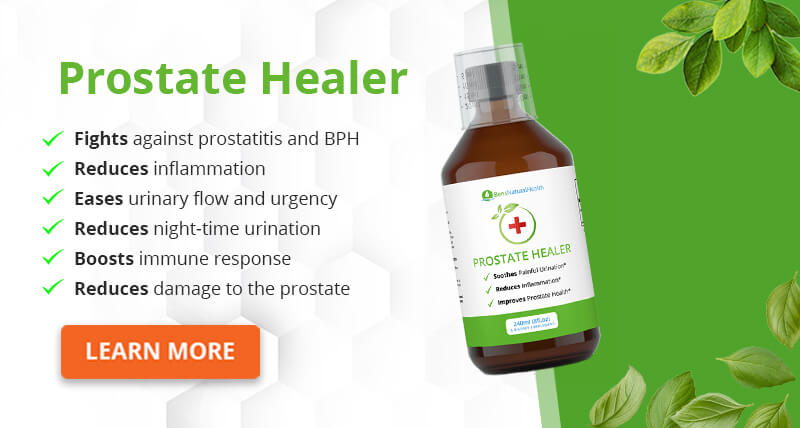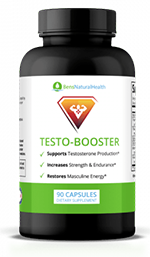- Q: What is kidney pain, and how can it be identified?
- Q: What does kidney pain feel like, and how is it different from other types of pain?
- Q: Where exactly is kidney pain felt in the body?
- Q: What are the main symptoms of kidney pain to watch out for?
- Q: What causes kidney pain, and what conditions can lead to it?
- Q: When should I see a doctor for kidney pain?
- Q: How is kidney pain treated, and what approaches are recommended?
- Q: Are there effective home remedies for kidney pain relief?
- Q: Will kidney pain go away on its own?
- Q: What happens if kidney pain goes untreated?
- Q: When is kidney pain an emergency?
- Q: How long does kidney pain last?
- Q: Does kidney pain come and go?
- Q: Is kidney pain dull or sharp?
- Q: Can dehydration cause kidney pain?
- Q: What's the difference between kidney pain and back pain?
- Q: Can the kidneys cause back pain?
- Understanding Kidney Pain Location and Symptoms
- Conclusion
- Our Medical Review Process
- Our Editorial Guidelines
- Medical Disclaimer
- Source
Renal pain, commonly known as kidney pain, is a discomfort that many describe as one of the most severe types of pain. While the pain associated with a kidney stone is often compared to labor pains in women, not all kidney pain feels the same. The sensation can range from a dull, persistent ache to a sharp, radiating pain that extends to the testicles or thighs. Since the kidneys are closely linked to the urinary tract and other bodily structures, understanding the location and nature of the pain is crucial for an accurate diagnosis. This article, featuring insights from Dr. Alberto Parra, a licensed medical doctor specializing in nephrology and urology, explores the causes, symptoms, and treatments for kidney pain, providing a definitive guide on where you may feel this discomfort and when to seek medical help. To provide the most accurate and clinically relevant information about where kidney pain is felt, we interviewed Dr. Alberto Parra, a licensed medical doctor with extensive experience in nephrology and urology. Dr. Parra provided detailed insights into the location of kidney pain, the variety of symptoms associated with kidney pain, and key distinctions between kidney pain and other types of back pain. All of Dr. Parra’s responses are derived from questions directly posed to him during the interview process, ensuring that the guidance offered is tailored and evidence-based. Furthermore, the content in this article is carefully reviewed and grounded in reputable medical sources, reinforcing its accuracy and reliability for readers seeking clarity on where to feel kidney pain, what kidney pain feels like, and when to seek medical evaluation.
Q: What is kidney pain, and how can it be identified?
Dr. Parra answers: Kidney pain, also called renal pain, is discomfort that originates from one or both kidneys. The location of kidney pain can give valuable clues about its cause and severity.
Where is kidney pain felt? Typically, kidney pain is a deep, sharp, or aching discomfort felt in the flank, the area of your back just below the rib cage and above the waist, on either side of the spine. The kidneys are located in this region, and pain usually signals an issue with the kidney itself or related structures, such as the ureter.
Diagnosing the location of kidney pain begins with a careful review of your medical history and a physical examination. Additionally, your doctor may recommend imaging studies, such as an ultrasound, CT scan, or MRI, to visualize the kidneys and identify any abnormalities or issues in the urinary tract.
The kidney pain area diagram often illustrates that pain is generally felt between the back and your sides, though it can radiate to the lower abdomen and groin. Identifying the location of your kidney pain is key to helping your healthcare provider make an accurate diagnosis.
As visualized in the image below, kidney stones (a common cause of kidney pain) can sometimes affect nearby structures, including the prostate:

Q: What does kidney pain feel like, and how is it different from other types of pain?
Dr. Parra answers: Kidney pain is most often felt in the flanks, the area between your lower ribs and hips, towards the back and sides of your body. Studies mention this type of flank pain can feel sharp, stabbing, or burning, and is sometimes described as a throbbing ache. While you might feel this pain on either the left or right side (depending on which kidney is affected), the sensation can also radiate to the upper abdomen, lower back, groin, or even the genitals.Unlike typical musculoskeletal back pain, which is often dull and generalized, kidney pain symptoms tend to be more intense and localized. Sometimes, kidney pain is accompanied by other symptoms, such as tenderness, swelling, or redness in the kidney area. The discomfort can range from mild to severe, may be constant, or occur in waves (particularly if caused by stones). Knowing how to identify kidney pain is crucial because it helps distinguish it from classic back pain.
Q: Where exactly is kidney pain felt in the body?
Dr. Parra answers: Understanding kidney pain in the body is essential for differentiating it from other types of pain. Research indicates the pain is felt:
- Between your rib cage and hips, on either side of the spine, is a classic location for issues affecting the kidneys themselves, such as infection or kidney stones lodged in the calyx.
- On only one side of the spine; for example, right-sided kidney pain symptoms or left-sided kidney pain symptoms tend to indicate a localized problem, ruling out systemic causes like polycystic kidney disease.
- Pain that originates in the flanks but radiates down to the genitals, thighs, or groin often means a stone is passing through the ureter or exiting via the urethra.
If you’re wondering, “Where do you feel kidney pain?” remember that it is usually located in the flank area, but it may radiate depending on the underlying cause. In women, the location of female kidneypain ontheback follows a similar general pattern, although some may also experience pain radiating toward the lower abdomen or pelvis.
Q: What are the main symptoms of kidney pain to watch out for?
Dr. Parra answers: Symptoms of kidney pain (renal pain) often signal a condition affecting the kidneys and can result from infection, injury, or other medical issues. Several authors agree in their reviews that the main signs of kidney pain include:
- Nausea and vomiting: These can occur due to pain severity or inflammation, particularly with infections or kidney/bladder stones, as inflammatory cytokines signal the brain to trigger nausea.
- Fever and chills: Typically a sign of infection, these symptoms often indicate a kidney infection and may coexist with bladder infections.
- Decreased urination: Can indicate bladder outlet obstruction or impaired kidney function, especially if a stone or severe damage alters urine filtration.
- Pain when urinating: A signal of irritation in the bladder or lower urinary tract involvement.
- Blood in the urine: Also known as hematuria, it can result from causes like urinary infections, stones, or cancer.
Other associated symptoms of kidney pain may include a dull ache in the lower back, swelling, or tenderness in the kidney area. Recognizing these symptoms early can lead to prompt treatment and relief of kidney pain.

Q: What causes kidney pain, and what conditions can lead to it?
Dr. Parra answers: Kidney pain can have many underlying causes. The most frequent include:
- Kidney infections (pyelonephritis): Bacterial infections that ascend the urinary tract can trigger severe, sometimes radiating, kidney pain.
- Kidney stones: These small, hard mineral deposits form within the kidneys and can cause sharp, radiating pain as they travel down the ureter.
- Urinary tract infections: Can cause inflammation and dull ache in the renal region, often worsened by movement.
- Glomerulonephritis: Inflammation of the tiny blood vessels inside the kidneys, causing pain, swelling, and sometimes fever.
- Polycystic kidney disease: A Hereditary condition leading to kidney enlargement and chronic pain.
- Bladder infection, trauma, or cancer can also be root causes of kidney pain.
The severity and location of pain, associated symptoms, and diagnostic testing can help distinguish these causes of kidney pain. A professional should assess these symptoms because other differential diagnoses need to be ruled out, and some may not be related to the urinary tract. Understanding what can cause kidney pain and why your kidneys hurt is critical in determining the appropriate therapy and preventing complications.
Q: When should I see a doctor for kidney pain?
Dr. Parra answers: Deciding when to seek medical attention is crucial. In many cases, the severity and uniqueness of the symptoms make it clear that you need urgent care. For example, a sudden, severe, and violent pain in your back that radiates to the genitals, especially when accompanied by fever, requires prompt evaluation, as it may signal a stone or serious infection. Medical literature recommends examining these symptoms with imaging techniques to detect kidney stones and rule out other problems.Even if your kidney pain is mild but persistent and doesn’t improve with over-the-counter medications, or is accompanied by other warning symptoms (such as nausea, blood in the urine, or swelling), it’s essential to consult a healthcare provider as soon as possible. Early medical assessment can help target the proper kidney pain treatment and avoid complications.
Q: How is kidney pain treated, and what approaches are recommended?
Dr. Parra answers: The most effective treatment for kidney pain depends on addressing the underlying cause. For acute pain and inflammation management, a doctor may prescribe non-steroidal anti-inflammatory drugs (NSAIDs) such as ibuprofen and naproxen. However, due to their potential effects on kidney function, NSAIDs should only be used under medical guidance and are not recommended for long-term or unsupervised use. Antispasmodics and alpha-blockers can help relax the muscles of the urinary tract, thereby reducing discomfort.
If an infection is the cause, antibiotics such as amoxicillin will generally be needed. Along with medications, lifestyle modifications are highly recommended for both acute and chronic kidney pain relief. Staying hydrated (by drinking plenty of water), avoiding substances that irritate the kidneys (like alcohol and caffeine), and maintaining a healthy weight with regular exercise can all support kidney health. In cases of kidney stones or structural damage, surgical intervention may be required to remove stones or repair the kidneys.
Q: Are there effective home remedies for kidney pain relief?
Dr. Parra answers: Some home remedies can supplement prescribed medical therapy for kidney pain relief, but they should not be used as a replacement, especially in cases of urgency or severity. Options that may help include:
- Herbal teas, such as chamomile and ginger, possess anti-inflammatory properties.
- Dandelion and other natural diuretics may help support healthy urine flow and toxin removal.
- Increased water intake to keep your urinary system flushed and reduce the risk of stone formation or infections.
- Rest and apply a warm compress to the affected area of pain.
- Avoiding foods high in sodium, processed items, and excess dairy can help minimize stress on the kidneys and reduce further inflammation.
Implementing these changes may reduce your risk of recurring kidney pain and support your recovery alongside standard therapies. Remember that persistent or severe pain always warrants a medical evaluation.

Q: Will kidney pain go away on its own?
Dr. Parra answers: That depends on the underlying cause. For example, mild urinary tract infections may resolve with antibiotics and anti-inflammatory foods or medications. However, severe infections or kidney stones often require medical intervention. If your pain persists, a medical evaluation is essential to determine the root cause and appropriate therapy.
Q: What happens if kidney pain goes untreated?
Dr. Parra answers: Letting kidney pain go untreated can lead to serious complications, including loss of kidney function. Common kidney pain causes like stones or infections can lead to urinary retention, disease, or, in severe cases, sepsis, a life-threatening systemic infection. If left unaddressed, you may require hospitalization or even risk long-term kidney damage. Prompt treatment is crucial, as untreated sepsis is a medical emergency.
Q: When is kidney pain an emergency?
Dr. Parra answers: Severe, sudden kidney pain, especially when accompanied by fever, vomiting, or urine abnormalities, can be an emergency. Kidney stones moving through the urinary tract can cause excruciating pain requiring immediate attention. Additionally, chronic or infectious kidney pain can lead to sepsis and multi-organ complications if not treated promptly. Usually, if your kidneys hurt badly enough to impair function or cause systemic symptoms, see a doctor immediately.
Q: How long does kidney pain last?
Dr. Parra answers: The duration depends on the cause. Acute pain from kidney stones is often severe and can last for hours to days until the stone passes or is removed. Chronic kidney pain from underlying diseases may persist for weeks or months, often requiring ongoing management. Recognizing signs of kidney pain can help you judge if your pain is acute or chronic.
Q: Does kidney pain come and go?
Dr. Parra answers: Yes, acute kidney pain (such as that from stones) often comes on suddenly and may come and go as the stone moves. Chronic pain tends to be more persistent, but may fluctuate in intensity based on the underlying condition and response to treatment.
Q: Is kidney pain dull or sharp?
Dr. Parra answers: Kidney pain can be sharp and acute, especially with kidney stones, or dull and chronic if there is an ongoing condition, such as an infection or inflammation. It may radiate to related areas, which can help distinguish kidney pain vs lower back pain.
Q: Can dehydration cause kidney pain?
Dr. Parra answers: Yes, studies indicate that dehydration can contribute to kidney pain. When you’re dehydrated, urine concentration increases, raising the risk for kidney stone formation and impeding normal function. Dehydration may also constrict blood vessels and impair circulation to the kidneys, potentially leading to pain and, in severe cases, acute kidney injury.
Q: What’s the difference between kidney pain and back pain?
Dr. Parra answers: Kidney pain vs back pain can often be distinguished by location and associated symptoms. Kidney pain is typically sharper and usually felt deeper in the flank or under the ribs, frequently accompanied by symptoms such as nausea, vomiting, or changes in urinary function. Musculoskeletal back pain is generally more diffuse, occurs with specific movements, and lacks urinary or systemic symptoms.
Q: Can the kidneys cause back pain?
Dr. Parra answers: Absolutely. Since kidneys are located in the lower back region, problems such as stones or chronic disease can trigger localized pain that sometimes radiates toward the groin or abdomen. Physical examination and diagnostic testing are required to confirm the source and distinguish it from other types of back pain.
Understanding Kidney Pain Location and Symptoms
Q: Where are your kidneys located in the body, and how does this relate to the location of kidney pain?
Dr. Parra answers: The kidneys are a pair of bean-shaped organs located in the lower back. They sit within a compartment of the abdominal cavity, far to the back, behind other internal organs, on each side of the spine below the rib cage. The right kidney is typically positioned lower than the left to accommodate the liver. This is why kidney pain is often felt in the back or flank area.
According to medical literature about kidney pain diagnosis, flank pain caused by kidney disease is typically located between the lower ribs and the top of the hips. The discomfort can sometimes be felt on both sides, but experiencing it on only one side is much more common. It mainly depends on whether one or both kidneys are affected. Patients describe it as a dull, aching pain deep inside the back when it’s insidious. However, the pain can become sharp and severe when kidney stones move or during an infection.
Radiation of pain is also a meaningful way to distinguish kidney pain from other sources of discomfort. The pain may radiate toward the side of the abdomen, the groin, or even the inner thigh. The genitals can also be affected due to shared nerve pathways that cross before reaching the brain, which can lead to referred pain in these areas.
Q: How can you tell the difference between kidney pain and back pain, especially if the pain is in your lower back?
Dr. Parra answers: It is crucial for doctors to differentiate between kidney pain and other sources of back pain, typically by considering the location, type of pain, and any associated symptoms. Medical literature is abundant on this differentiation, but sometimes it all comes down to common sense, as kidney pain typically exhibits urinary features that pinpoint the source of the pain to the urinary system.
First, it’s crucial to note that kidney pain is not superficial. Instead, it is felt deep within the body and is often described as dull, with difficulty pinpointing it to a specific area. Rather than using a finger to locate the pain, patients typically move their hands around the flank area on one or both sides of the body. The pain does not change with posture or movement and may radiate to the side of the abdomen, the groin, or the inner thigh; however, such radiation occurs spontaneously and is not dependent on the patient’s actions.
It’s also important to consider any accompanying symptoms, such as urinary changes, which can help identify whether the pain is related to the urinary system. For example, flank pain combined with blood in the urine, urgency, and burning may indicate kidney infections, with or without stones. If nausea and fever are the main symptoms, kidney stones are likely the cause. Conversely, if the pain is closer to the hips, worsens with stretching or lifting, is triggered by physical activity, and is relieved by massage or resting the back, it is likely not related to urinary or systemic issues.
Q: Why do my kidneys hurt only on one side? Is there a reason why kidney pain is felt more on the right or left side?
Dr. Parra answers: Kidney pain can sometimes be felt on both sides, but certain types of kidney issues are more commonly associated with one side. For example, kidney stones are felt in the affected kidney. The same applies to localized infections like pyelonephritis or if you experience trauma to your kidneys or ureter obstructions on one side.
Depending on the case, you may be more susceptible to issues in one kidney, which could be due to functional or structural differences between the kidneys. The right kidney is positioned lower than the left due to the presence of the liver. Some people experience more frequent pain on the right side because this side may be more prone to mechanical problems, and the right kidney can sometimes be more easily felt when inflamed. On the left side, the kidney is located near the spleen, which can sometimes lead to a higher likelihood of pain radiating and variations in how pain is perceived.
Unilateral pain typically results from kidney stones moving on one side, infection, blockage, or other medical conditions that need prompt treatment to prevent damage. Even if your pain is mild, you should undergo imaging and a urine test to determine the exact cause, regardless of whether you feel it in your left or right kidney area. Kidney stones or infections can also trigger bilateral pain, but it is more likely due to systemic causes or a blockage in the bladder or urethra.
Q: What should women know about female kidney pain: location on the back, and are there unique symptoms for females?
Dr. Parra answers: Females experience kidney pain very similarly to how men feel it. It is usually located in the same area, deep in the flank, just below the ribs, and to the side of the spine. However, there are some differences in how it radiates because it may extend downward to the groin. Instead of being felt on the testicles, it is thought on the labia majora on the affected side.
Men and women also have a few anatomical differences that may cause unique considerations for each sex. For example, females have a shorter urethra, which increases their risk of urinary tract infections that can more easily develop into kidney infections if not promptly treated. This may lead to flank pain combined with systemic symptoms such as fever and chills. The shorter urethra in females increases their risk of urinary tract infections, which can more easily ascend to the kidneys and cause pyelonephritis, leading to symptoms such as flank pain and systemic symptoms like fever and chills.
We should also consider gynecologic conditions such as endometriosis and ovarian cysts, which often mimic kidney pain. Another factor to keep in mind is pregnancy, where a growing uterus increases the risk of urinary infections and obstruction caused by the enlarging uterus. Also, studies show that women with polycystic ovary syndrome are more prone to urological problems such as lower urinary tract symptoms (LUTS), overactive bladder (OAB), urinary tract infections (UTIs), and nephrolithiasis.
Q: How to relieve kidney pain instantly? Are there safe at-home methods for rapid relief of kidney pain?
Dr. Parra answers: Depending on the source of kidney pain, some at-home remedies may provide temporary relief, but they cannot replace medical treatment. The effectiveness of these methods depends on the underlying issue, and there is no instant cure that can be done at home. However, you can try specific strategies to ease your discomfort or reduce the pain’s intensity.
For example, if you experience mild, dull back pain caused by small, passing kidney stones, increasing your water intake can help flush the urinary tract and alleviate symptoms. Applying gentle heat, such as a heating pad or warm compress, to the flank area may also relax the muscles around your kidneys and lessen the pain. Resting in a comfortable position, such as lying on your side with your knees slightly bent, can further ease discomfort.
Over-the-counter medications like acetaminophen can provide short-term relief, but avoid NSAIDs such as ibuprofen unless your doctor approves. Consider that, according to research, some of these medications can affect kidney function, so it’s essential to evaluate the cause of your pain before using them.
If your kidney pain is severe, persistent, accompanied by fever, difficulty urinating, or blood in your urine, seek urgent medical care. There is no at-home remedy for this type of pain, and these are red flags for conditions that could impact your long-term kidney health if not addressed immediately.
Conclusion
Understanding where kidney pain is felt is crucial for identifying its cause and seeking timely medical care. This pain is typically located deep in the flank, below the rib cage, on either side of the spine, and may be accompanied by other symptoms, such as fever or changes in urinary function. While not all back pain is related to the kidneys, knowing the key differences can help you make an informed decision about your health. If you experience severe or persistent pain, or if new symptoms accompany it, it’s vital to consult a healthcare provider for a proper diagnosis and treatment.
Our Medical Review Process
At Ben’s Natural Health, our commitment lies in transparent, precise, and scientifically sound information. Every article is written by healthcare professionals and is rigorously reviewed every 12 to 24 months to keep it accurate, thoroughly researched, and in line with current scientific knowledge. We reference only peer-reviewed studies and research from reputable medical journals. You’ll find comprehensive citations and links in every article, so you can trust the validity of the information you read. For further insight into our practices and standards, visit our medical review process.
Our Editorial Guidelines
Ben’s Natural Health has delivered reliable, evidence-based natural health information for over 25 years. Our strict editorial guidelines are in place to ensure trust and reliability. All articles are crafted by qualified medical professionals—including doctors, dietitians, nutritionists, trainers, and surgeons—and go through independent review. We always disclose our writers’ credentials and expertise, with full bios linked at the beginning of each piece. To understand how we ensure accuracy and integrity in our work, explore our complete editorial guidelines.
Medical Disclaimer
The content on this blog is intended solely for general informational purposes and should not be considered as a replacement for professional medical advice, diagnosis, or treatment. While our articles are authored by licensed physicians and medically reviewed, the information is not tailored to your specific health situation, nor does it serve as personal medical advice. Always consult your doctor or another qualified health care professional for guidance regarding any health-related decisions. Do not ignore or postpone seeking medical advice because of material you have read here. All information provided is used at your own risk.
Explore More








